 |
 |
 |
| |
Primary Providers as Successful as Specialists in Treating HCV Infection
|
| |
| |
Conference on Retroviruses and Opportunistic Infections (CROI), February 22-25, 2016, Boston
Mark Mascolini
Primary care physicians and nurse practitioners treat HCV patients as effectively as HCV specialists, according to results of a 600-patient longitudinal comparison in Washington, DC [1]. Patients in the study population were largely African American and included challenging subpopulations. About 20% of treated people had HIV infection.
A shortage of HCV specialists who can deploy potent new anti-HCV drugs is an early stumbling block in the HCV care cascade. Researchers at the University of Maryland and other centers launched the ASCEND study to see how primary care providers compare with experienced specialists in treating HCV with new direct-acting antivirals.
Providers at three community health centers in Washington, DC identified HCV patients and distributed them in a nonrandomized manner to receive treatment from a primary care physician, a nurse practitioner, or an infectious disease or hepatology specialist. All providers had a 3-hour training session on HCV treatment guidelines. All patients took ledipasvir/sofosbuvir.
Of the 600 patients, 156 got treated by a primary care physician, 150 by a nurse practitioner, and 294 by a specialist. Median age of the study group stood at 58.7, and two thirds were men. Proportions of blacks were 100% in the primary care physician group, 93.3% in the nurse practitioner group, and 95.9% in the specialist group. About one third of participants (35.3%) had stage 2 fibrosis, while 36.4% had stage 3 or 4 fibrosis, with little difference between groups. Most people (82.3%) had never been treated for HCV, again with little difference between groups.
Proportions of patients treated for 8 weeks were 1.9% in the primary care physician group, 4.7% in the nurse practitioner group, and 6.5% in the specialist group. Respective proportions treated for 12 weeks were 94.9%, 90.7%, and 86.6% and for 24 weeks 3.2%, 4.7%, and 6.9%. Only 8% of patients stopped treatment, including 5% lost to follow-up.
In a per protocol analysis involving 304 patients, more than 90% achieved sustained virologic response at 12 weeks (SVR12), including 96.7% in the primary care physician group, 94.9% in the nurse practitioner group, and 92.1% in the specialist group. Among patients coinfected with HIV, SVR12 rates were 89% (8 of 9) with primary care physicians, 91% (10 of 11) with nurse practitioners, and 93% (39 of 42) with specialists.
Visit adherence calculated as composite attendance at weeks 4, 8, and 12 was significantly better in patients treated by primary care physicians (49%) and nurse practitioners (51.4%) than in those treated by specialists (19.2%) (P = 0.002). Most of the difference reflected worse attendance by specialist patients at weeks 4 and 8. At week 12 similar proportions in each group (about 62%) kept their appointment.
A limitation of the analysis is lack of randomization, which means more difficult-to-manage patients may have been sent to specialists, while nurses and primary care docs got the easier patients. Yet patients were evenly distributed by one important criterion--fibrosis stage.
The researchers proposed that their treatment model "could increase the availability of community-based, nonspecialist providers to significantly expand the scale of HCV therapy, and bridge existing gaps in the hepatitis C care cascade."
Reference
1. Kattakuzhy SM, Gross C, Teferi G, et al. High efficacy of HCV treatment by primary care providers: the ASCEND study. Conference on Retroviruses and Opportunistic Infections (CROI), February 22-25, 2016, Boston. Abstract 538LB.
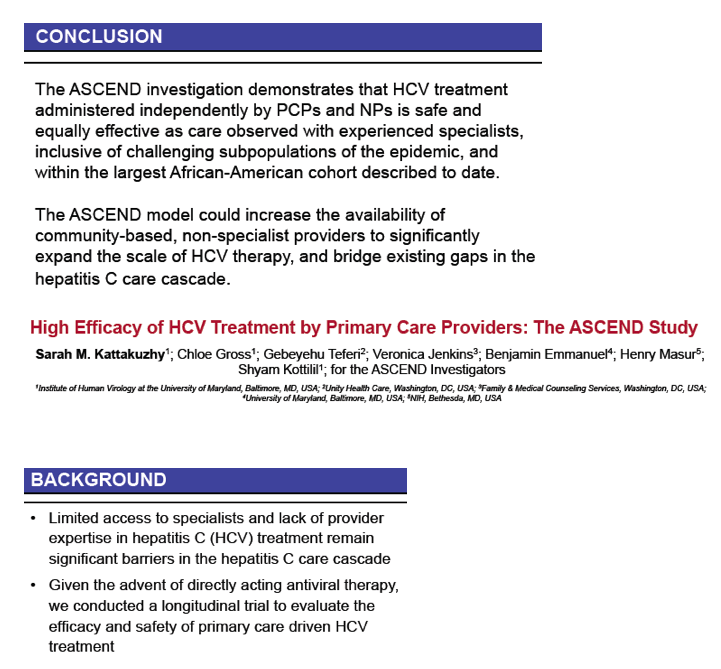
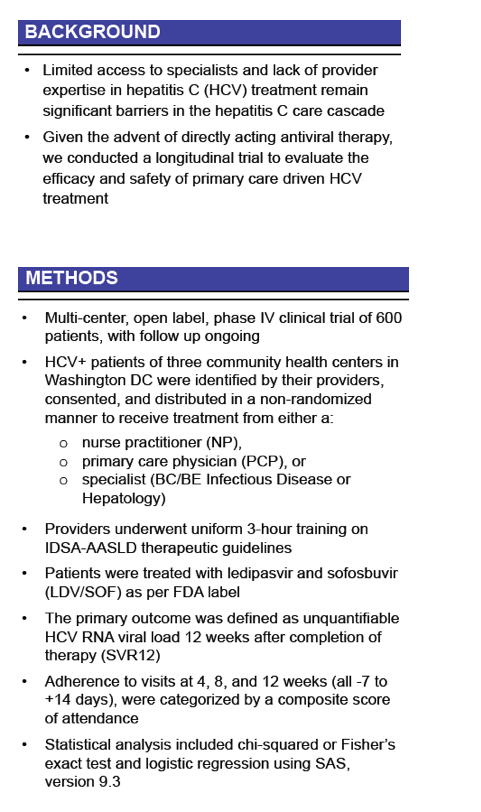
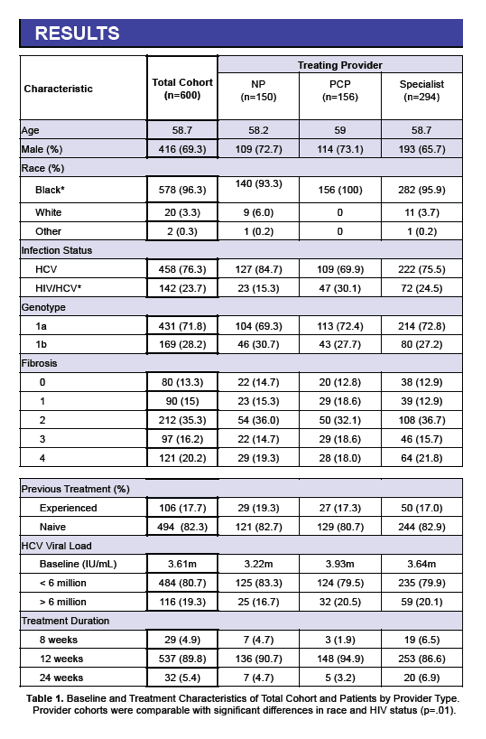
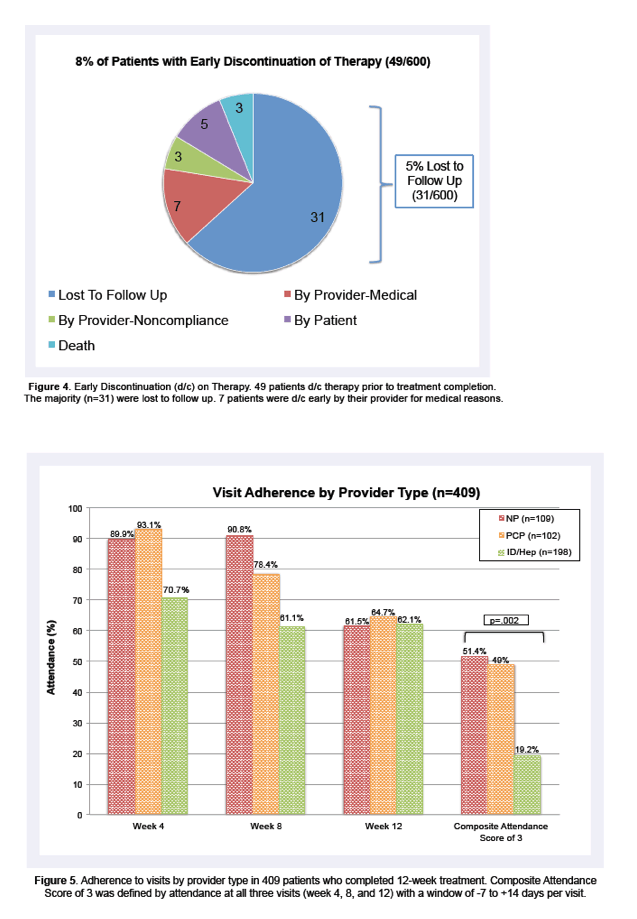
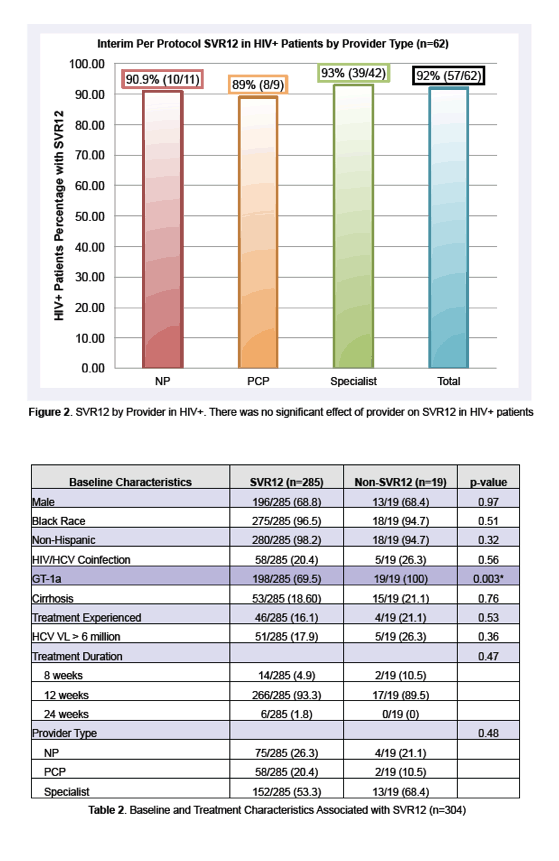
|
| |
|
 |
 |
|
|